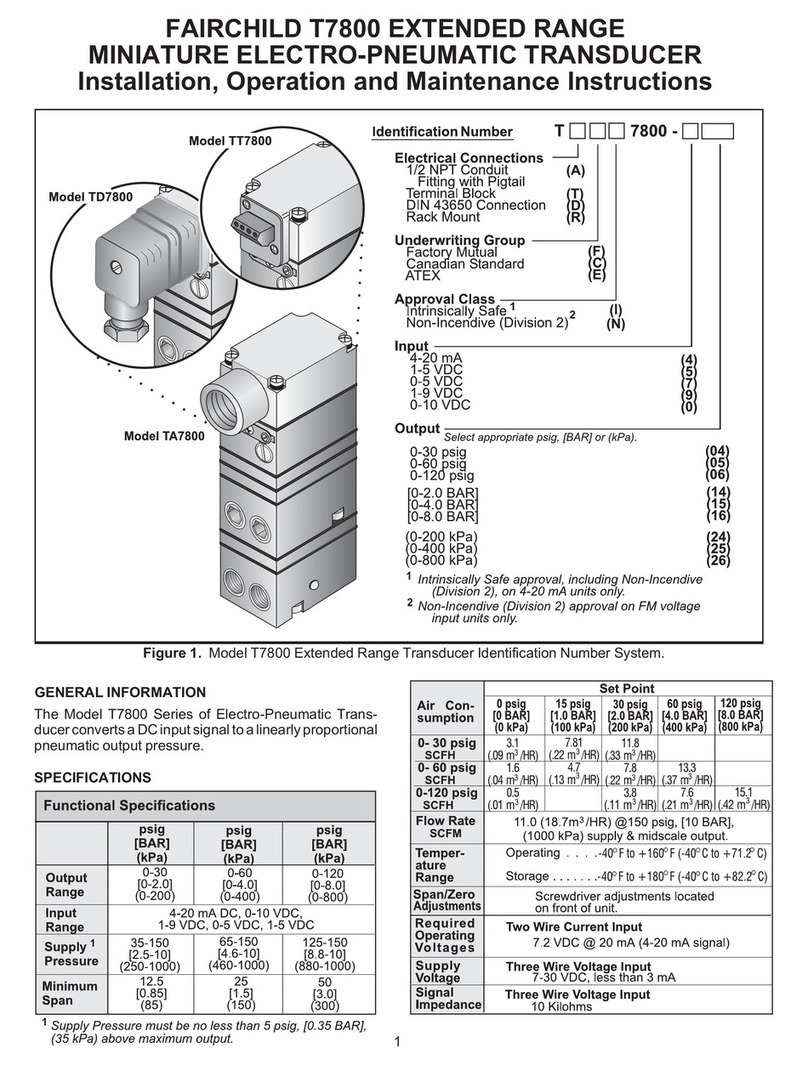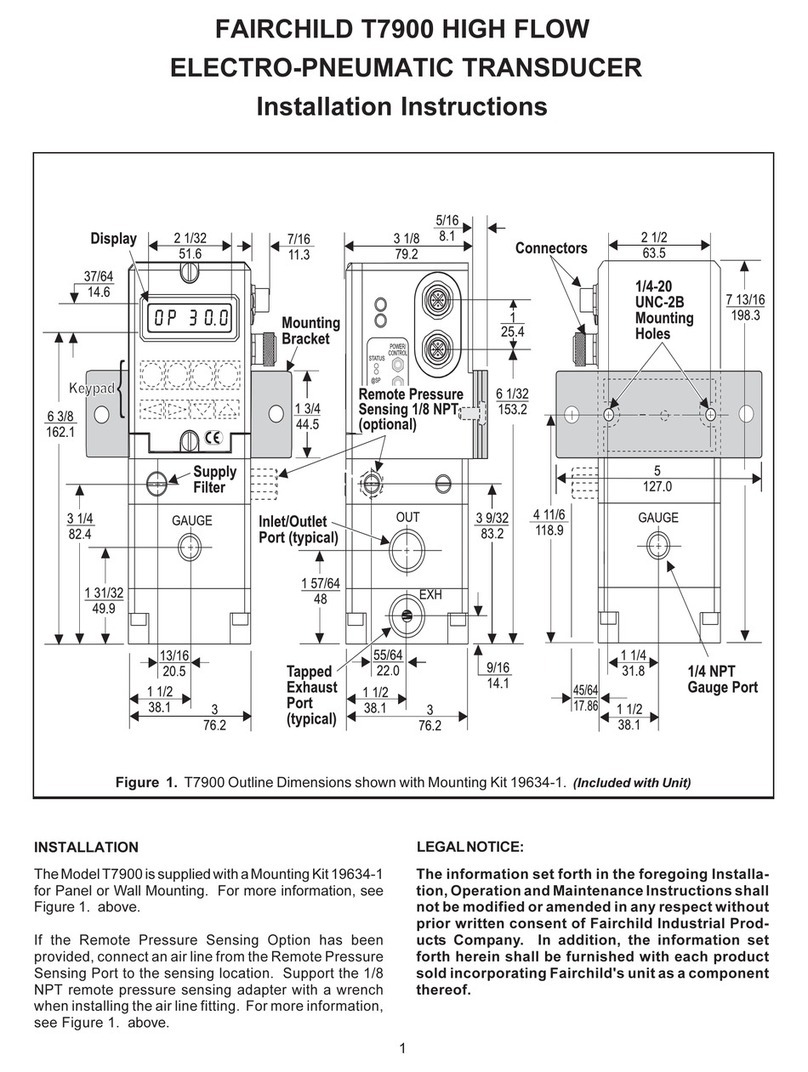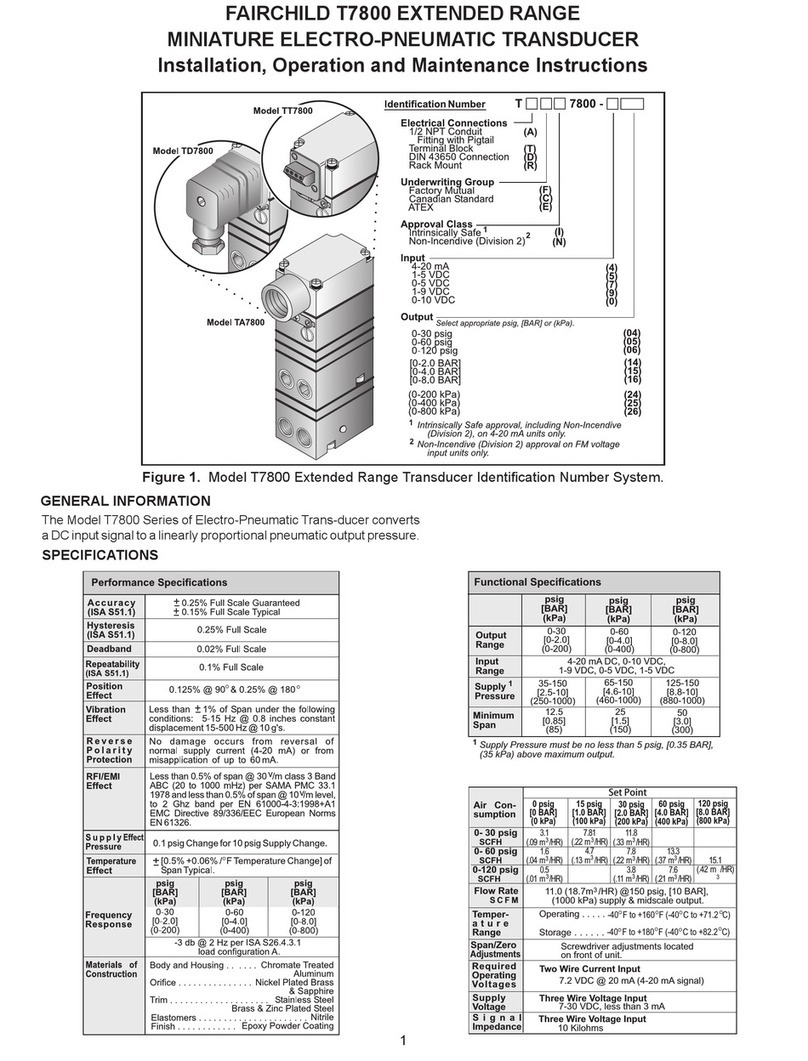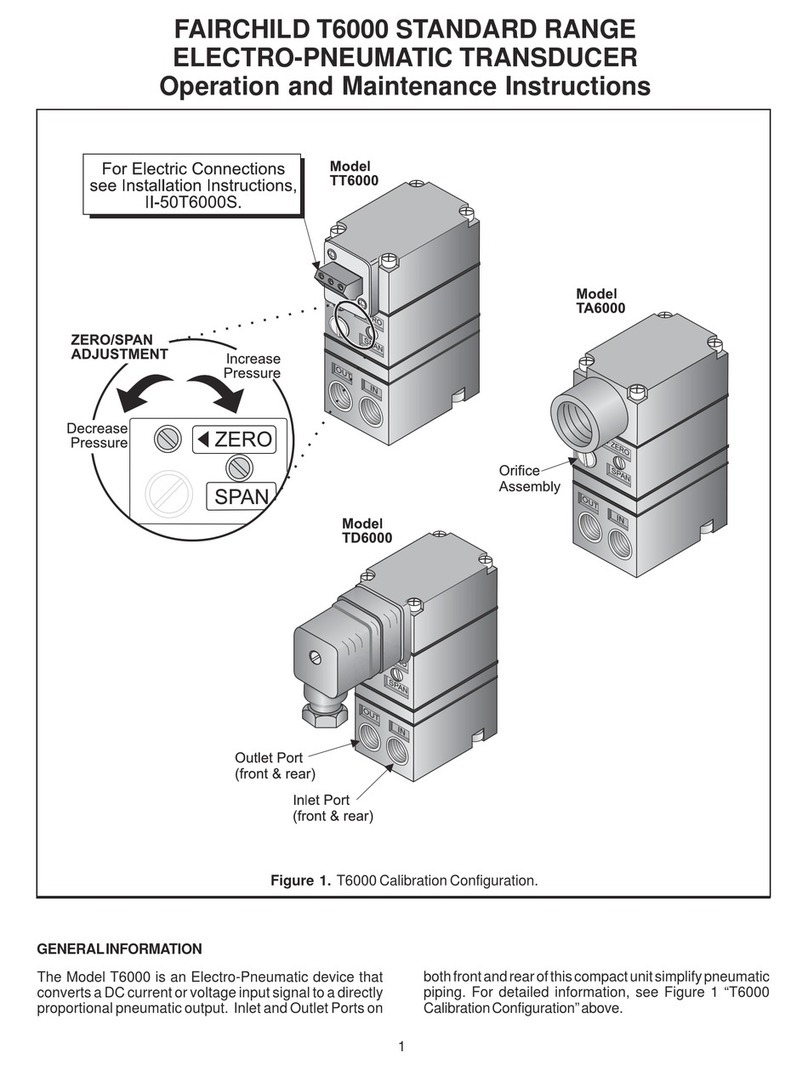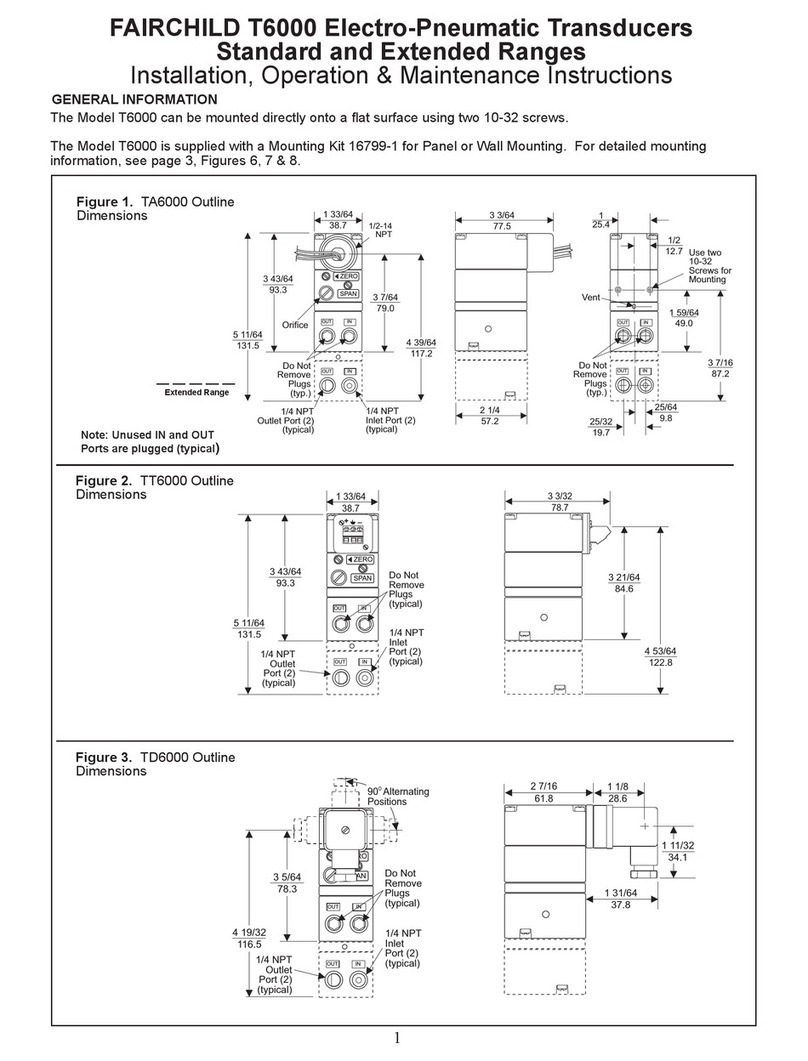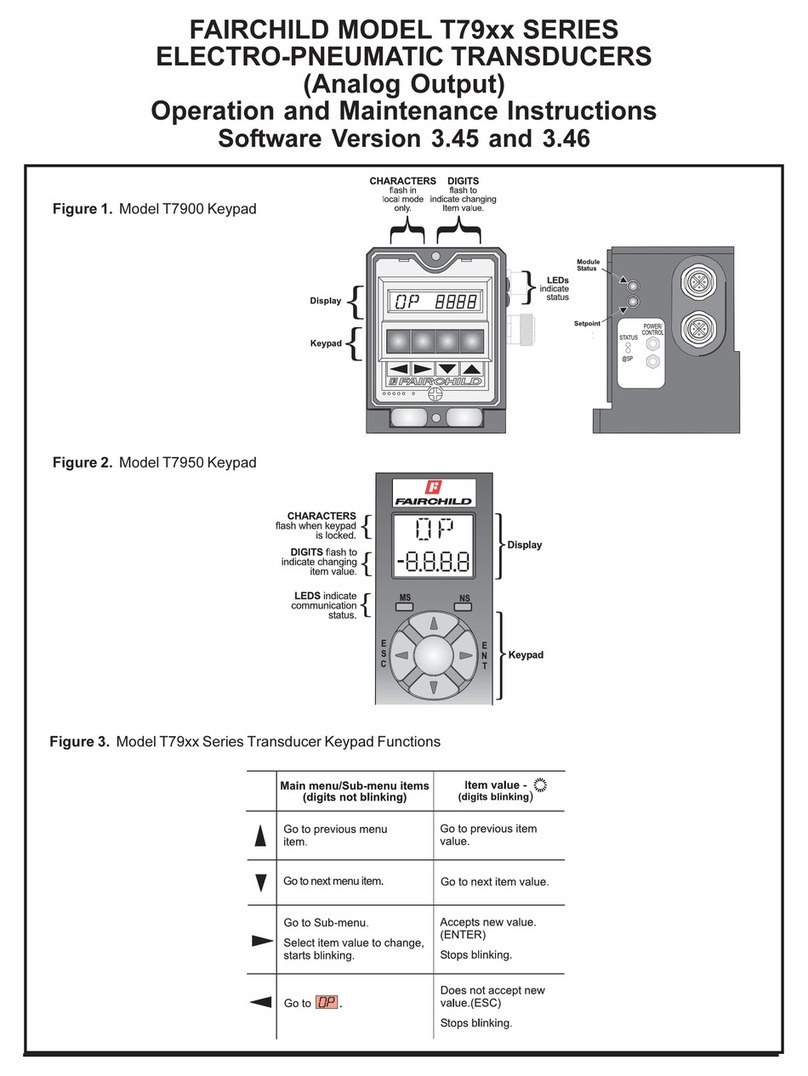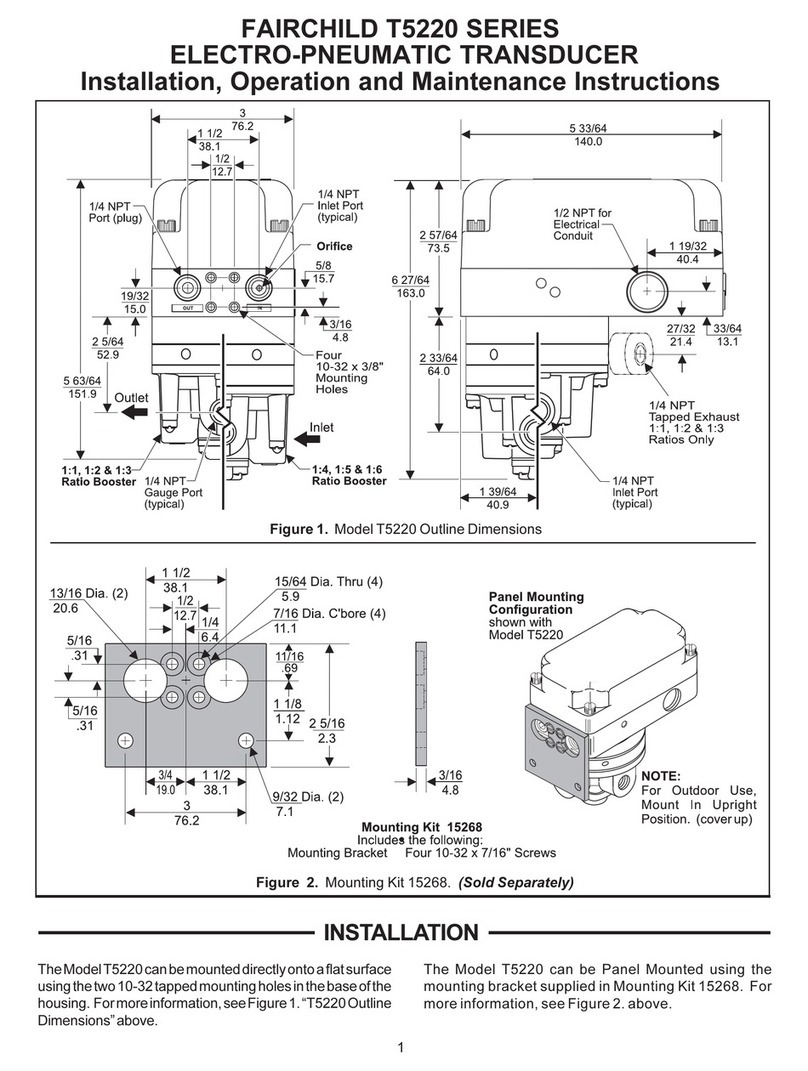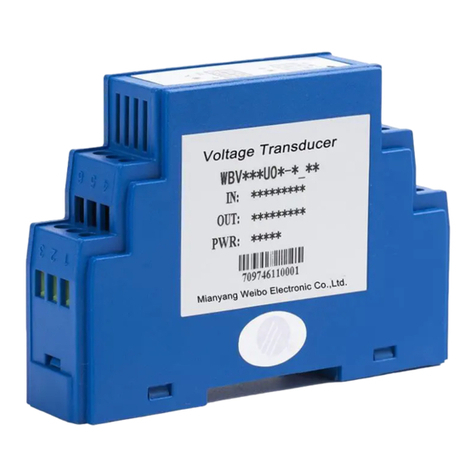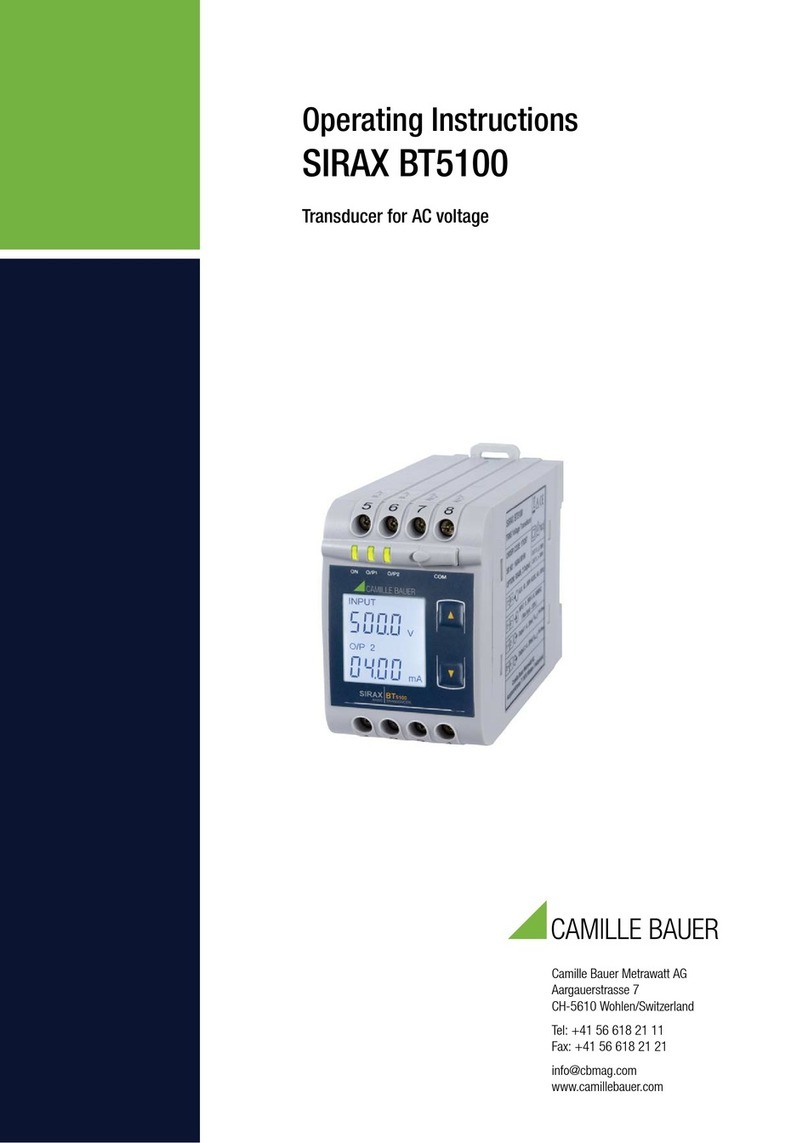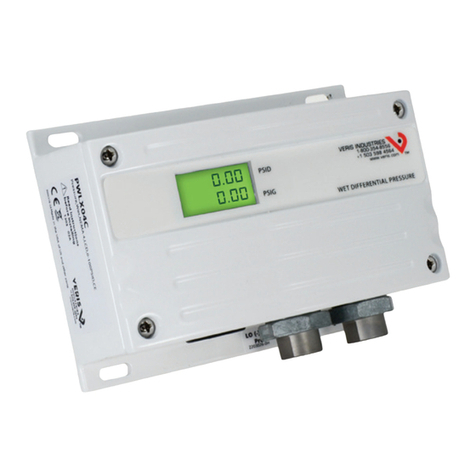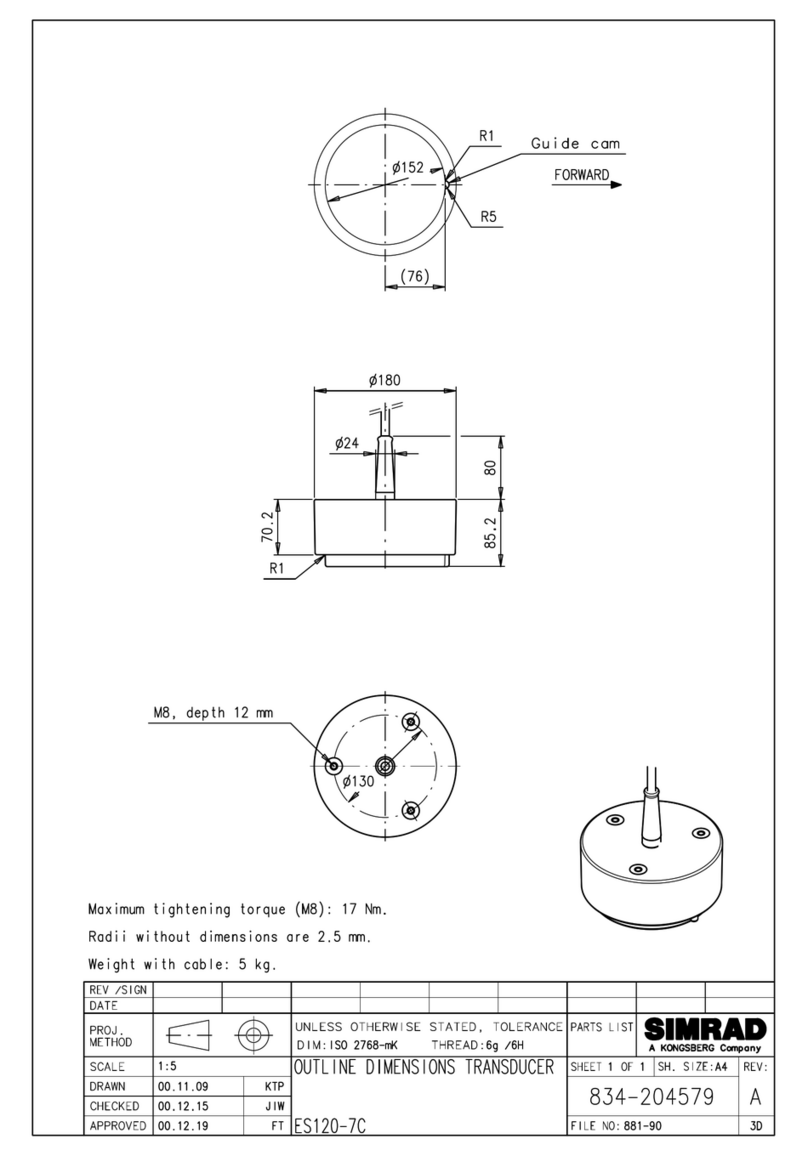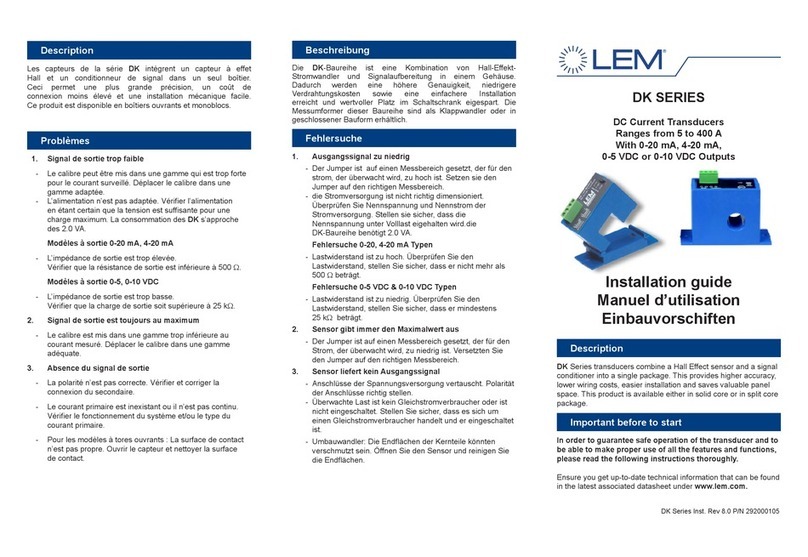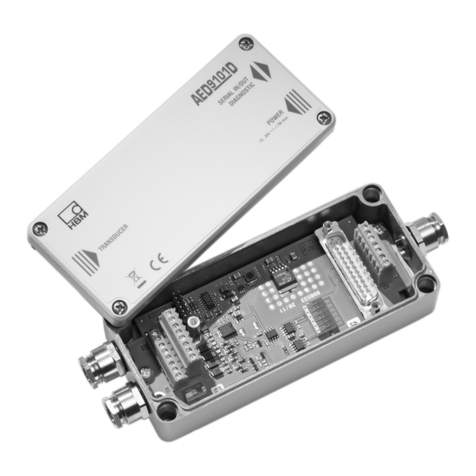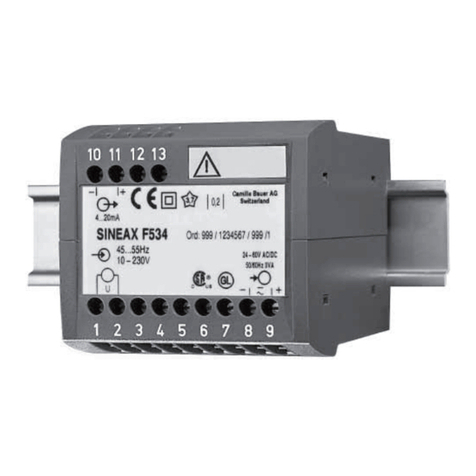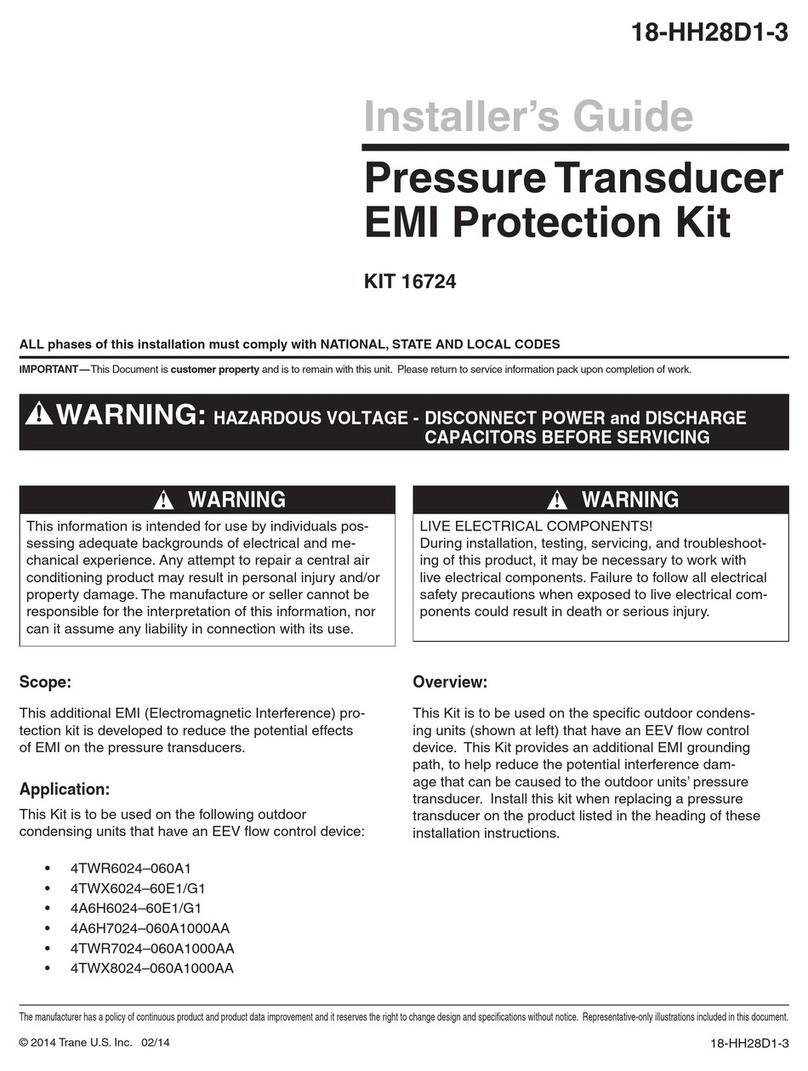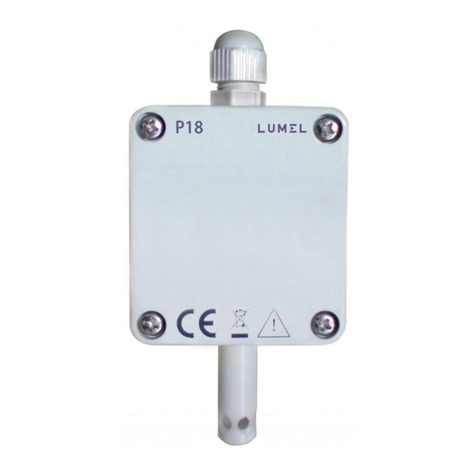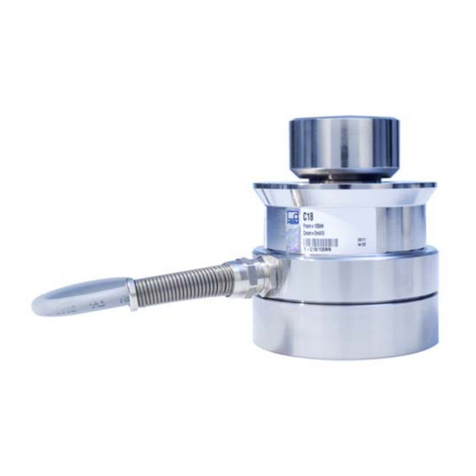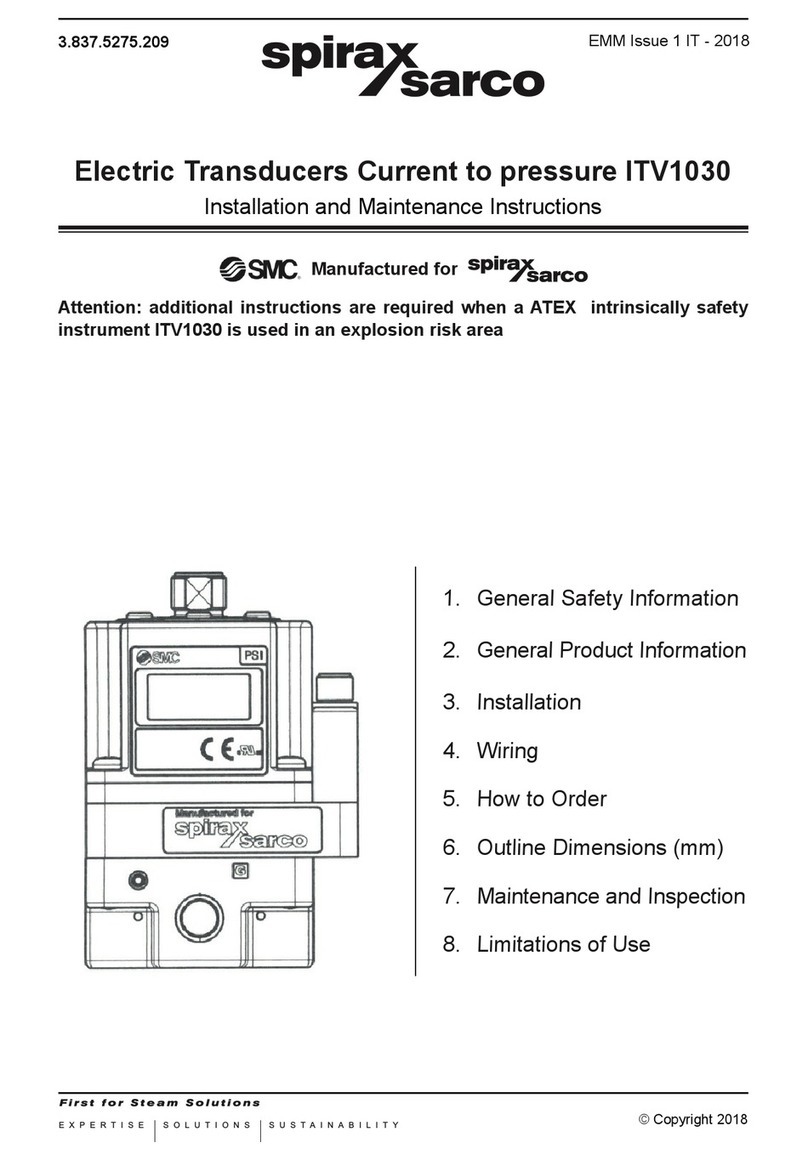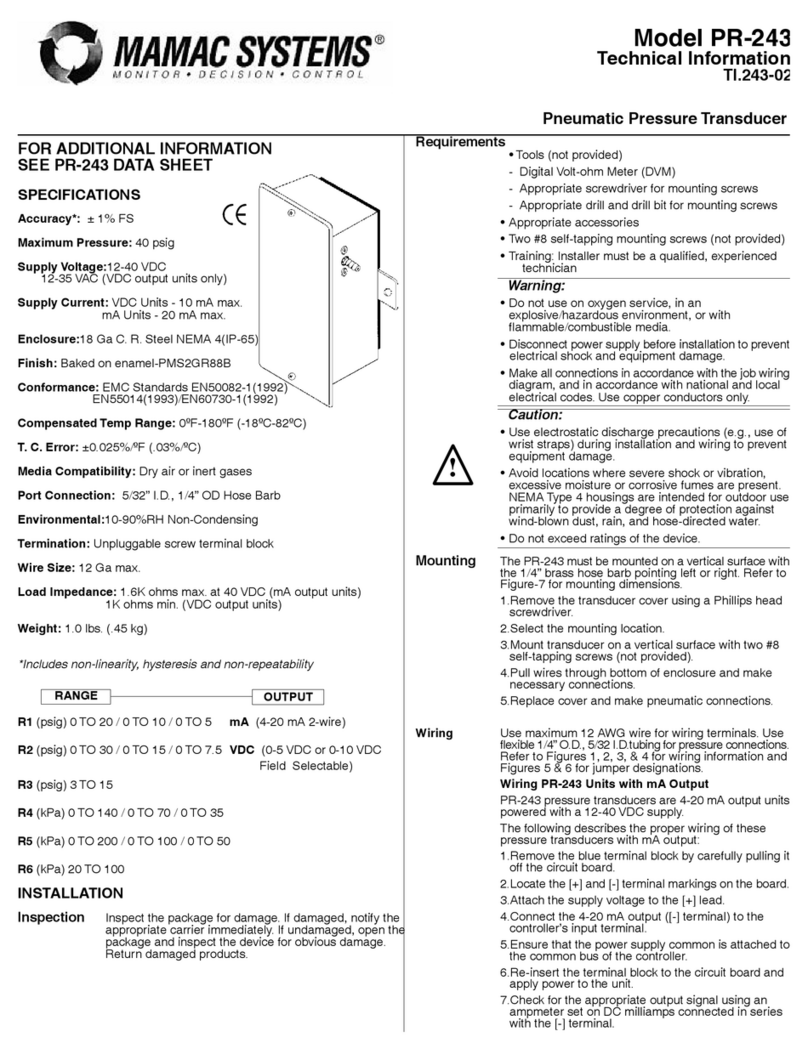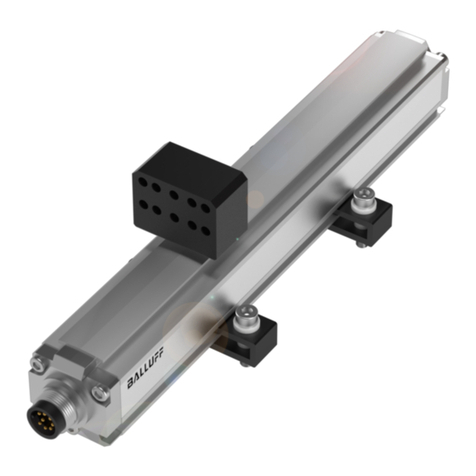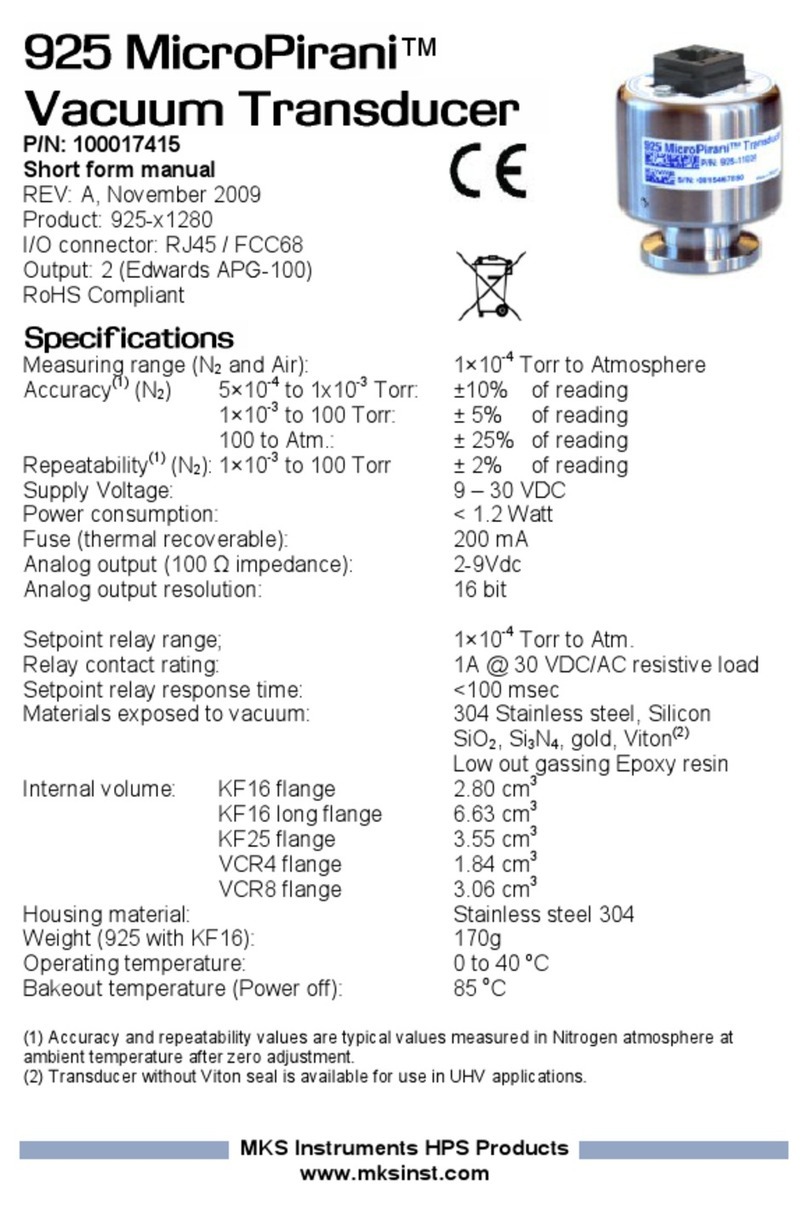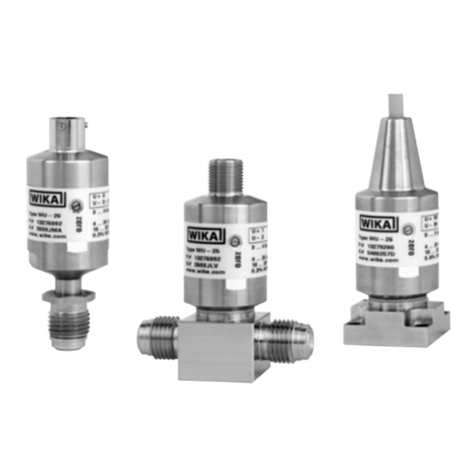
_
_
Pneumatic Connections
Clean all pipelines to remove dirt and scale before instal-
lation.
Apply a minimum amount of pipe compound to the male
threads of the fitting only. Do Not use teflon tape as a
sealant. Start with the third thread back and work away
from the end of the fitting to avoid the possibility of
contaminating the transducer. Install the transducer in the
air line.
The inlet and outlet ports are labeled on the end of the
transducer. Tighten connections securely. Avoid under-
sized fittings that will limit the flow through the transducer
and cause a pressure drop down stream. For more
information, see Figure 2. “Outline Drawing” on page 3.
NOTES: Instrument quality air, per ISA Standards D7.3-
1981, is required. Use a filter to remove dirt
and liquid in the air line ahead of the trans-
ducer for correct performance. If an air line
lubricator is used, it MUST be located down-
stream, beyond the transducer.
The user is responsible for insuring that the
environment in which the unit will be in-
stalled, and the operating gas, are compatible
with the materials in the transducer.
Electric Connection
For the T5200 Transducer, make connections to the Ter-
minal Block through a 1/2 NPT Conduit Connector (not
supplied) and a plastic sleeve as shown below in Figure 7.
“Electrical Connections”.
For the TXPD5200 Transducer, make connections from
the Sealed Connector Wires to an external Terminal Block.
The TXPD5200 Transducer has an additional ground wire
that is used. For more information, see Figure 7. “Electrical
Connections” below.
NOTE: The T5200 & TXPD5200 should be wired in
accordance with the wiring diagram inside of
cover.
Wiring in Hazardous Areas
Wiring in hazardous areas should be performed in accor-
dance with the Table 1. and any local codes that apply.
Table 1. Hazardous Location Wiring Practices.
Country Agency Code
U.S.
Canada
FM
CSA
ANSI/ISARP 12.6 & ANSI/NFPA 70
CEC Part 1
Intrinsically Safe Connections
Refer to the latest revision of the indicated drawing.
Table 2. Intrinsically Safe Installation Drawings.
Underwriting Group Drawing Number
To prevent possible ignition of hazardous at-
mosphere, DO NOT REMOVE COVER from the
TXPD5200 Transducer while current is on.
WARNING:
FM (Factory Mutual)
CSA (Canadian Standards)
EC-14007
EC-16097
To maintain Explosion-Proof capability, DO NOT
DAMAGE mating surfaces between cover and
base. NEVER ADD GASKETS.
+
Conduit
Connector
(Forward Mode)
Green Lead
( ) ground
Plastic
Sleeve
1/2 NPT
(typical)
Black Lead
( ) negative
Terminal Block
+
+
_
_
_
Red Lead
(+) positive
RED
RED
GREEN
GREEN
BLACK
BLACK
(Reverse Mode)
+
_
I
N
P
U
T
+
_
I
N
P
U
T
Model T5200
_
Terminal Block
(Forward Mode)
+
_
+
_
I
N
P
U
T
NA
Model TXPD5200
Sealed
Connector
Wires
+
_
+
_
I
N
P
U
T
NA
(Reverse Mode)
Conduit
Connector
Figure 7. Electrical Connections.
6
